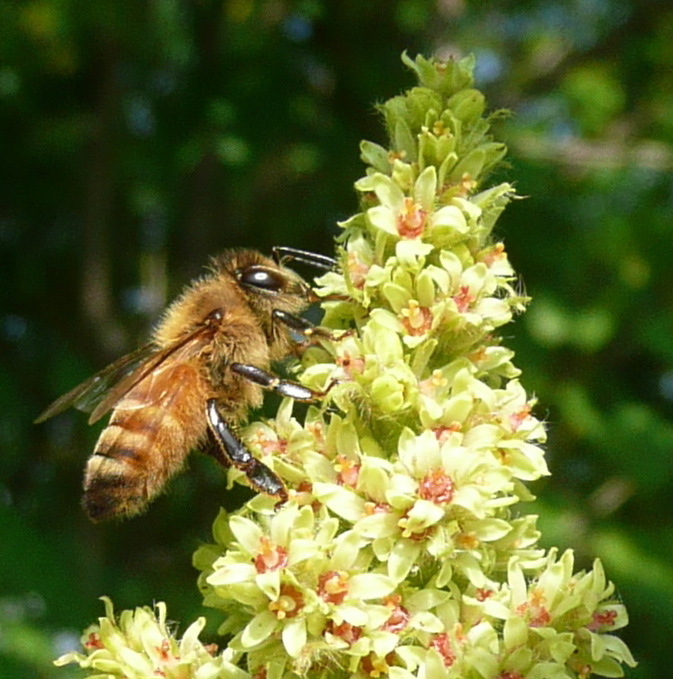
“Staghorn sumac bloom” by Annie Watson, Thistle Hill Studio
June brings the blooming of the staghorn sumac. Its beautiful flowers are a major food source for honey bees. I’ve seen them covered with bees on a warm June afternoon.
Largest of the North American sumacs at 15-25 feet tall, Staghorn sumac is named after the” velvet” on young branches similar to that covering the antlers of a male (stag) deer. In early summer, male and female flower cones on separate plants are covered with many tiny flowers. After pollination the flowers turn into clusters of “drupes” — small red hairy fruits that are eaten by deer and birds all winter. The foliage turns red and orange in the fall and a hedge of sumacs is really beautiful at that time of year.
By allowing sumac to grow in your hedgerows and property edges, you provide important food for honey bees, deer, and birds.
For more about this plant go to the Missouri Botanical Garden web site.